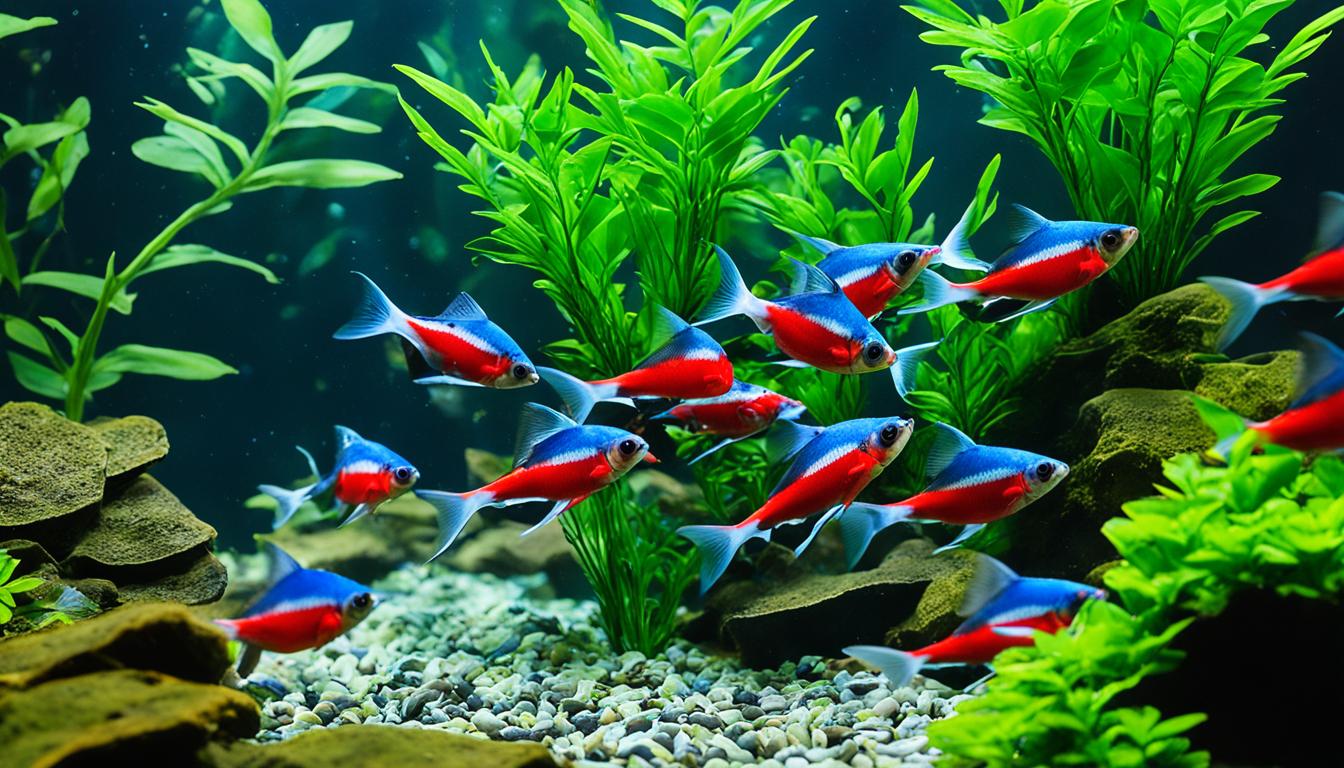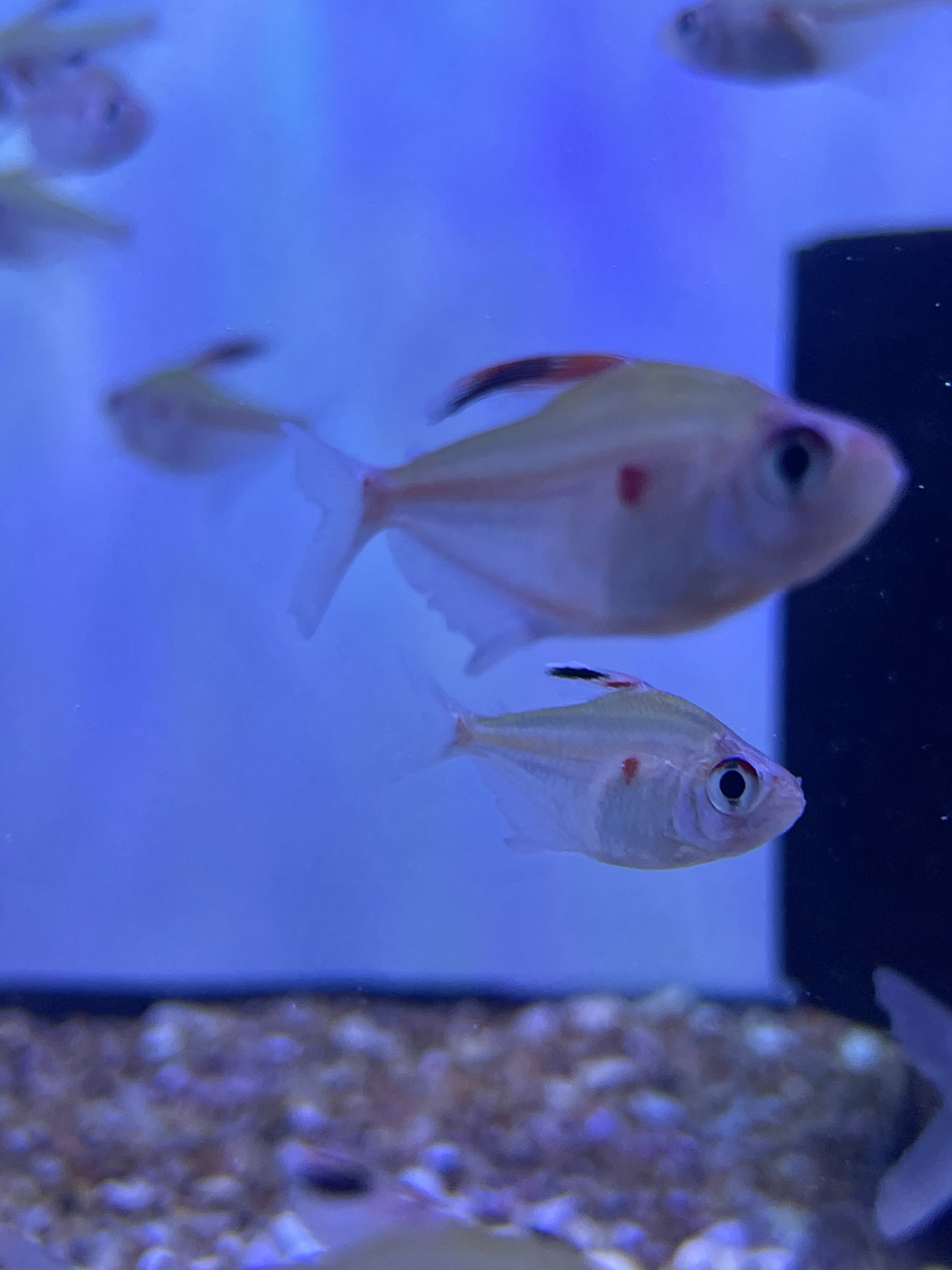Bleeding heart tetra is one of the most sought-after freshwater aquarium fish due to its unique appearance and vibrant colors. This species, scientifically known as Hyphessobrycon erythrostigma, has captivated aquarists worldwide with its heart-shaped red spot near the tail and shimmering silver body. If you're considering adding bleeding heart tetra to your aquarium, this article will provide all the information you need to ensure their health and happiness.
Bleeding heart tetras are native to South America, specifically found in the rivers of Bolivia and Brazil. Their striking appearance makes them a popular choice for both beginner and experienced aquarists. Understanding their natural habitat, dietary needs, and social behavior is essential for creating an ideal environment in your home aquarium.
In this article, we will explore everything you need to know about bleeding heart tetras, including their care requirements, tank setup, breeding tips, and potential health issues. By the end of this guide, you'll have the knowledge and confidence to successfully care for these beautiful fish.
Read also:Trippie Bri Leaks Unveiling The Truth Behind The Controversy
Table of Contents
- Biology and Physical Characteristics
- Natural Habitat and Distribution
- Tank Setup and Requirements
- Diet and Feeding
- Behavior and Temperament
- Compatibility with Other Fish
- Breeding Bleeding Heart Tetras
- Health and Disease Prevention
- Maintenance and Water Parameters
- Conclusion and Final Thoughts
Biology and Physical Characteristics
Bleeding heart tetras are medium-sized fish that grow up to 2.5 inches in length. Their most distinctive feature is the heart-shaped red spot located near the base of their tail, which gives them their name. This red spot is more prominent in males, while females tend to have a more subdued coloration.
They have a sleek, torpedo-shaped body with shimmering silver scales that reflect light beautifully. Their fins are transparent, adding to their graceful swimming motion. Bleeding heart tetras also have a small adipose fin, a characteristic feature of characins.
Unique Features
- Heart-shaped red spot near the tail
- Silver body with reflective scales
- Transparent fins for streamlined swimming
- Adipose fin present in all individuals
These physical characteristics make bleeding heart tetras a standout species in any aquarium. Their peaceful nature and vibrant appearance make them a favorite among fish enthusiasts.
Natural Habitat and Distribution
Bleeding heart tetras are native to the rivers of South America, particularly in Bolivia and Brazil. They inhabit slow-moving rivers, streams, and flooded forest areas with dense vegetation. The water in their natural habitat is typically soft, acidic, and slightly murky due to the presence of tannins from decaying leaves.
Understanding their natural environment is crucial for creating an ideal tank setup. Mimicking their native conditions will help them thrive in captivity.
Key Habitat Features
- Soft, acidic water with pH levels between 5.5 and 7.5
- Temperature range of 73-82°F (23-28°C)
- Dense vegetation and leaf litter for shelter
- Dim lighting to replicate their natural environment
By replicating these conditions in your aquarium, you can ensure the well-being of your bleeding heart tetras.
Read also:Gucci Third Leg A Comprehensive Exploration Of Fashions Bold Innovation
Tank Setup and Requirements
Setting up the right tank environment is essential for the health and happiness of bleeding heart tetras. These fish thrive in spacious tanks with plenty of swimming room and hiding spots.
For a small group of 6-8 bleeding heart tetras, a 20-gallon tank is sufficient. However, larger tanks are recommended for bigger groups, as they are schooling fish and prefer the company of their own kind.
Essential Tank Components
- Substrate: Fine sand or small gravel to mimic their natural riverbed
- Filtration: High-quality filtration system to maintain water quality
- Heating: Heater to maintain consistent water temperature
- Plants: Dense aquatic plants for shelter and aesthetic appeal
Adding driftwood and leaf litter can further enhance their environment, providing natural hiding spots and tannins that improve water quality.
Diet and Feeding
Bleeding heart tetras are omnivorous and will accept a variety of foods. A balanced diet is essential for their health and vibrant coloration. High-quality flake or pellet food should form the basis of their diet, supplemented with live or frozen foods for additional nutrition.
Recommended Diet
- Premium flake or pellet food
- Live or frozen foods such as brine shrimp, bloodworms, and daphnia
- Vegetable matter like blanched spinach or zucchini slices
Feeding them 2-3 times a day in small amounts ensures they receive adequate nutrition without overfeeding, which can lead to water quality issues.
Behavior and Temperament
Bleeding heart tetras are peaceful and social fish that thrive in groups. They exhibit schooling behavior, swimming together in a synchronized fashion. This makes them an excellent addition to community tanks with other peaceful species.
They are generally shy and may take time to acclimate to a new environment. Providing plenty of hiding spots and dim lighting can help them feel more secure and encourage their natural behavior.
Behavioral Traits
- Schooling behavior in groups of 6 or more
- Peaceful and non-aggressive towards tankmates
- Shy and may hide when first introduced to a new tank
Observing their behavior can provide insights into their well-being and help you address any potential issues early on.
Compatibility with Other Fish
Bleeding heart tetras are compatible with a wide range of peaceful fish species. When selecting tankmates, consider species with similar care requirements and temperaments to ensure a harmonious community tank.
Ideal Tankmates
- Other tetra species such as neon tetras and cardinal tetras
- Guppies and mollies
- Corydoras catfish
- Peaceful livebearers like platies and swordtails
Avoid keeping them with aggressive or large fish that may bully or outcompete them for food. Creating a balanced community tank will enhance the overall health and happiness of all its inhabitants.
Breeding Bleeding Heart Tetras
Breeding bleeding heart tetras is relatively straightforward if the right conditions are provided. A separate breeding tank is recommended to ensure the safety of the eggs and fry. The breeding tank should have soft, acidic water with a temperature of around 78°F (25.5°C).
Conditioning the breeding pair with high-quality live or frozen foods can encourage spawning. Once the female lays her eggs, it's best to remove the parents to prevent them from eating the eggs.
Breeding Tips
- Provide a separate breeding tank with soft, acidic water
- Condition the pair with live or frozen foods
- Remove the parents after spawning to protect the eggs
- Feed the fry with infusoria or finely crushed flake food
With proper care, the fry will grow into healthy adults, ready to join your main aquarium.
Health and Disease Prevention
Like all aquarium fish, bleeding heart tetras are susceptible to common diseases such as ich, fin rot, and bacterial infections. Maintaining excellent water quality and providing a balanced diet are the best ways to prevent illness.
Regular water changes, proper filtration, and monitoring water parameters can help keep your fish healthy. Observing their behavior and appearance can also alert you to potential health issues early on.
Common Health Issues
- Ich: White spots on the body and fins
- Fin Rot: Frayed or discolored fins
- Bacterial Infections: Redness or swelling on the body
Consulting a veterinarian or experienced aquarist can provide additional guidance on treating and preventing diseases in your aquarium.
Maintenance and Water Parameters
Regular maintenance is essential for the long-term health of your bleeding heart tetras. Performing weekly water changes, cleaning the substrate, and checking water parameters will ensure a stable and clean environment.
Monitoring pH levels, ammonia, nitrite, and nitrate concentrations can help prevent water quality issues. Using a reliable water testing kit will provide accurate readings and allow you to make necessary adjustments.
Water Parameter Guidelines
- pH: 5.5-7.5
- Temperature: 73-82°F (23-28°C)
- Ammonia: 0 ppm
- Nitrite: 0 ppm
- Nitrate:
Consistency is key when maintaining water parameters. Avoid sudden changes in temperature or pH, as they can stress your fish and lead to health issues.
Conclusion and Final Thoughts
Bleeding heart tetras are a stunning addition to any aquarium, bringing vibrant colors and peaceful behavior to your aquatic community. By understanding their care requirements, natural habitat, and social behavior, you can create an ideal environment for them to thrive.
We encourage you to share your experiences with bleeding heart tetras in the comments below. Whether you're a seasoned aquarist or a beginner, your insights can help others successfully care for these beautiful fish. Don't forget to explore our other articles for more tips and advice on aquarium care.
Thank you for reading, and happy fishkeeping!


